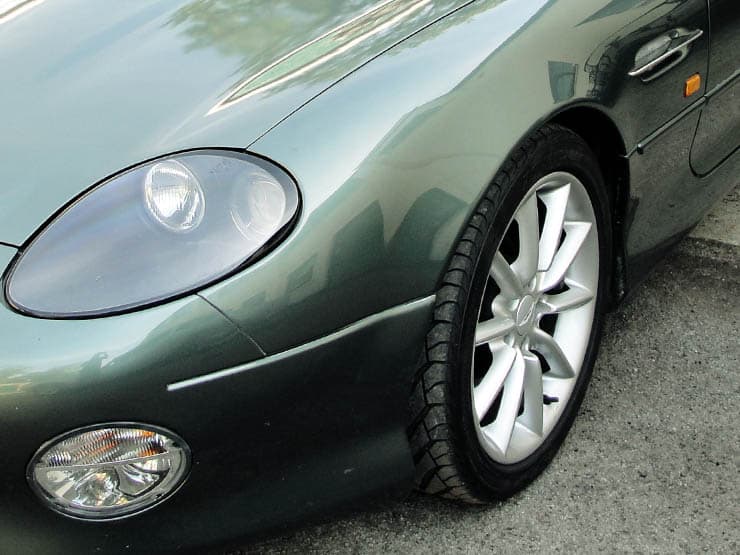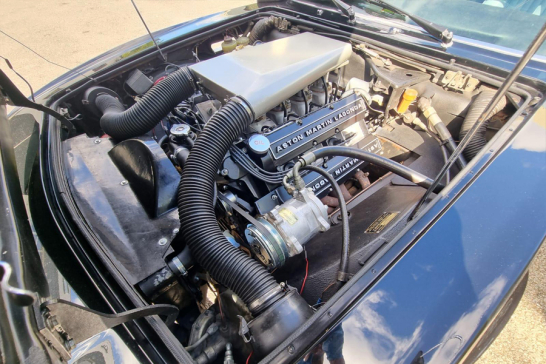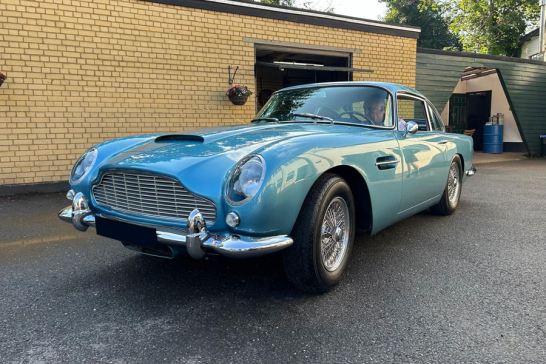At first glance, asking whether any Aston Martin is set to be a future classic may seem like a silly question and, to a degree, it is. After all, given the timeless appeal of cars like the DB5 and DB6, there’s a very strong case for saying that future classic status can be taken for granted where Aston Martins are concerned.
When the question stops being quite so silly, however, is when it’s applied to the Aston Martin DB7, which was originally unveiled in 1993, before going into production the following year. We’re taking a quick look at the reasons why this might be so, and attempting to come up with an answer of our own.
Will An Aston Martin DB7 Investment Pay Off?
To begin by stating the blindingly obvious, one of the reasons questions are raised regarding the classic status of the DB7 is that it was always intended to be an ‘affordable’ Aston Martin. Of course, one person’s ‘affordable’ is another person’s hugely expensive, but the fact that you can pick up a well-preserved DB7 for around £30,000 puts ownership in an entirely different bracket to that of the DB5 and DB6. If you can afford the latter then clearly, that’s what you’re going to go for, but the relatively low price of the car makes it an ideal alternative for those with less cash to splash but the desire to own an Aston Martin. It may sound snobbish, but there’s no denying the fact that this lower price tag has led to many people looking down on the DB7; hence the questions about its long term status. The fact of the matter is that it was never intended as a direct alternative to the other Aston Martins, but was aimed at a different sector of the Aston Martin market.

Some History
When the DB7 was launched Aston Martin was owned by Ford, which also owned Jaguar at the time. As a result, a rumour took root which stated that the DB7 was, in effect, a Jaguar project which was abandoned by them and picked up by Aston Martin. The facts of the matter are that the DB7 was styled at Aston Martin by Keith Helfet and Ian Callum, and that the latter had previously worked for Jaguar. The DB7, then, was something which Callum brought with him as a concept and design, rather than it having previously been rejected by Jaguar, but the rumour led to the feeling that the DB7 was somehow ‘not a proper Aston Martin’.
The truth is that the front and rear suspension of the DB7 are basically Jaguar. The rear suspension is the E Type Jaguar, while the front suspension is the Mark 2 Jaguar with some aspects shifted around. Even the engine block is pretty much a supercharged Jaguar engine block, while the floor pan of the car is Jaguar XJS. At the time, details like this counted against the DB7's status in the eyes of some, but now it seems people have either forgotten all that, or decided it doesn’t really matter.
Deciding that details like these don’t really matter is actually a sensible course of action, given that utilising parts in this way was common practice for Aston Martin, as well as other manufacturers such as Jensen. Many manufacturers used to make use of switches from various British Leyland cars, and the handles on the original DB4 and DB5 actually came from a Bedford TK van, so the idea that a DB7 can’t become a classic because of borrowing parts is actually pretty silly. The end result is a car that’s extremely pleasing to look at, at the same time as offering a fantastic drive, and surely that’s what people are looking for in any Aston Martin?

Potential Problems
There are a few problems associated with buying and investing in an original DB7; perhaps more so if you're looking at its potential to become a classic. However, most problems can be overcome by taking the time and trouble to purchase from a specialist. Of course, being Aston Martin specialists ourselves you might think we’re bound to say that, but it’s a fact; main dealers, even Aston Martin dealers, don’t have the expertise, time or infrastructure to take preventative action to deal with issues such as rust. That’s why we’re seeing older DB7s that have been affected by rust and haven’t been repaired properly. Repairing them properly means cutting out the rusted section, making up new sections and welding them in – the kind of work we’ve been doing since we came out of school basically – whereas a lot of garages will just plate over the top, and from what we see they don’t even make a very good job of doing that. In simple terms, if you make an investment in an older DB7 it’s quite likely to have some areas of rust that need fixing like this, and most garages will just farm the work out to specialists.
The Future
There are already a few indications that this "modern" Aston Martin is going to be regarded as a classic in the future. The first of these is the most obvious – the prices have stopped going down and started going up a little bit. At the same time, people buying them do so on the understanding some work over and above servicing will be needed to maximise worth and performance. This might involve rebuilding the suspension, which is something we see fairly often, although the engines themselves, especially on the i6, never really need much doing to them. To listen to, the engine on an i6 might not seem like anything special, but mechanically it really is top-notch. Other issues include problems with the coil packs on the V12 Vantage version, which can mean a bill of £2000, and if anything goes wrong with the air conditioning, then you’re looking at having to remove the entire dashboard to reach the relevant parts.

In Conclusion
On balance, there’s no good reason why the DB7 shouldn’t become a future classic Aston Martin, and the idea put around by some people that the lower cost means it doesn’t have to be looked after properly isn’t an idea that we’ve got any room for. A beautiful Aston Martin is a beautiful Aston Martin, and they all deserve to be looked after. Even if you can afford a DB5 and go and buy one for yourself, there are lots of reasons to think about investing in a cheeky little DB7 on the side, as it were.




